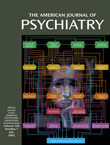The practice of psychopharmacotherapy has become more chaotic and complex in the 8 years between the first and third editions of this book. Not only are there more medications, but the indications for these medications have been expanded by their use across diagnostic boundaries and in treating individual symptoms as well as disorders. Such expansion has led to a marked increase in idiosyncratic and poorly investigated adventures in polypharmacy. This polypharmacy is inhibited only marginally by accumulating evidence of the extent and causes of drug-drug interactions, by demands that physicians limit their practices to “evidence-based” medicine, and by concerns that the pharmaceutical industry is distorting traditional physician education. Concurrently, under the hammer of managed care, we psychiatrists have less time to analyze and interpret the exploding amount of information available to us from multiple sources. Even the narrow category of available psychopharmacotherapy books has an embarrassment of riches, presenting the time-pressured clinician with many excellent (and not so excellent) texts varying from encyclopedic compendiums to brief descriptions of available remedies. Clinicians and students must chose their readings and texts carefully to gain the maximum instruction and information for the time invested. Principles and Practice of Psychopharmacotherapy, although requiring a significant investment of time (and money), rewards the reader by identifying and discussing what is chaos and what is complexity in our current psychopharmacological treatments.
The new edition begins by clearly explaining the basic principles governing the authors’ practice of psychopharmacotherapy (e.g., “an empirically based foundation, derived from scientific investigation, is used to guide treatment decisions”). The next two chapters present the scientific approach to drug design and pharmacokinetics basic to understanding the discussions in the following chapters on specific categories of drugs. These subsequent chapters have similar formats, first discussing the indications for and then treatment with antipsychotics, antidepressants, mood stabilizers, antianxiety agents, sedative-hypnotics, ECT, and other somatic therapies. Two final chapters are reserved for the assessment and therapy of disorders that cross drug category boundaries, such as obsessive-compulsive and posttraumatic stress disorders, and for assessment and treatment of special populations, such as children, the elderly, alcoholics, and pregnant women.
The book’s approach closely (perhaps too closely) adheres to DSM-IV categories. Treatment strategies supported by the authors are consistently based on evidence, and the greatest weight is given to those strategies established by multiple well-designed clinical studies. Strategies with weaker evidence are also noted but are discussed with the liberal use of modifiers such as “possible,” “maybe,” and “perhaps” and are given less attention and space. When design problems in studies are encountered, these are usually clearly explained rather than dismissed by the customary, “This study was poorly designed.” Studies supporting a given treatment approach that are sponsored by the pharmaceutical industry are often identified as such with an explanation of how the study might be distorted by its sponsorship.
Among the book’s strengths is writing that is consistent and lucid throughout, with little repetition of material. Each chapter ends with an exhaustive list of references that are remarkably up-to-date (the book was published in 2001, and the latest references are to 2001). Useful tables and flow charts outlining treatment strategies for specific DSM-IV disorders abound throughout the chapters. The book ends with a serviceable index.
Some might consider the book’s philosophical and practical allegiance to efficacy over effectiveness studies a weakness because there is not enough discussion of the current battle lines in this contemporary debate. Others might judge the book out of step because of its reluctance to discuss neurotransmitters in extended detail or to tie most disorders and symptoms to specific neurotransmitter types and subtypes.
For whom is this book of value? Residents, medical students, and those contemplating a career in psychopharmacological research certainly would benefit. What about the harried clinician who has time for few texts? I would vote for this book to be on our shelves because of its insistence that supporting evidence (and its quality) be the prime criterion for considering a treatment strategy and that less proven approaches be viewed skeptically. The number and popularity of non-evidence-based sources are growing and pervasive. We clinicians need sources of scientific information that not only provide credible guidelines to treatment but also teach us to recognize the value of what is offered. When we have to venture beyond the evidence for our patients (which we must do frequently), we must not fool ourselves (or be fooled) into believing that science is always on our side, no matter how tightly our chosen molecule binds to our favorite receptor.

